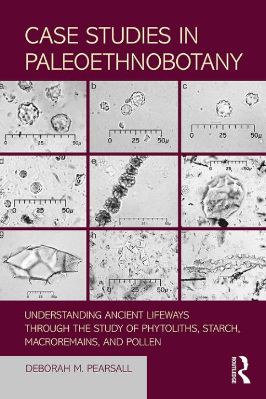
| Case Studies in Paleoethnobotany. Understanding Ancient Lifeways through the Study of Phytoliths, Starch, Macroremains, and Pollen | |
| Archaeological Studies | |
| PDF Book | |
| 261 | |
| 32.3 Mb(s) | |
|
|
| October 7, 2023 | |
| English | |
| Read PDF Book Online | |
| Click to Download the PDF |
Case Studies in Paleoethnobotany. Understanding Ancient Lifeways through the Study of Phytoliths, Starch, Macroremains, and Pollen
Title: Case Studies in Paleoethnobotany: Understanding Ancient Lifeways through the Study of Phytoliths, Starch, Macroremains, and Pollen
Author: Deborah M. Pearsall
Book Description:
Case Studies in Paleoethnobotany: Understanding Ancient Lifeways through the Study of Phytoliths, Starch, Macroremains, and Pollen by renowned archaeobotanist Deborah M. Pearsall is an illuminating journey into the world of paleoethnobotany, a discipline that unveils the secrets of ancient civilizations through the examination of plant remains. In this comprehensive work, Pearsall offers an in-depth exploration of the field, using case studies from various archaeological sites around the world to showcase the pivotal role that plants played in the development of human societies.
Paleoethnobotany is a captivating field that allows us to reconstruct the diets, agricultural practices, and even the spiritual beliefs of our ancestors. Pearsall’s book serves as a valuable resource for both seasoned researchers and newcomers, as it combines scholarly rigor with accessible prose, making complex concepts understandable to all.
The book is divided into several sections, each focusing on a specific type of plant residue analysis: phytoliths, starch grains, macroremains, and pollen. Pearsall provides a thorough introduction to the principles and methods of each technique, enabling readers to grasp the intricate details of paleoethnobotanical analysis. Her expertise in the subject shines through as she guides readers through the intricacies of plant preservation and identification.
The heart of Case Studies in Paleoethnobotany lies in the meticulously selected case studies. Pearsall takes readers on a global tour of archaeological sites, from the lush rainforests of South America to the arid deserts of the Middle East. Each case study presents a unique puzzle that paleoethnobotanists have unraveled, shedding light on the agricultural practices, culinary traditions, and ecological contexts of bygone civilizations. Whether it’s the examination of ancient maize agriculture in Mesoamerica or the analysis of plant remains in ancient Egyptian tombs, these case studies captivate the imagination and deepen our understanding of the past.
Deborah M. Pearsall’s commitment to interdisciplinary collaboration is evident throughout the book. She highlights the synergy between paleoethnobotany and other archaeological and anthropological disciplines, emphasizing how plant remains complement the broader archaeological narrative. This interdisciplinary approach adds depth and richness to the book, making it an indispensable reference for scholars across various fields.
In addition to its scholarly contributions, Case Studies in Paleoethnobotany is a testament to the importance of understanding our ecological history. It reminds us that our ancestors were intimately connected to the plant world, relying on it for sustenance, medicine, and culture. Pearsall’s work encourages readers to contemplate the delicate balance between humans and their environment, offering valuable insights into how past societies thrived or faltered in their relationships with nature.
In conclusion, Deborah M. Pearsall’s Case Studies in Paleoethnobotany is a masterful exploration of the past through the lens of plant remains. It not only provides a comprehensive overview of paleoethnobotanical techniques but also presents captivating case studies that bring ancient civilizations to life. This book is a must-read for anyone fascinated by archaeology, anthropology, and the enduring connection between humans and the plant world..
Digital screenshot from the PDF Book
To learn more about the book titled: Case Studies in Paleoethnobotany. Understanding Ancient Lifeways through the Study of Phytoliths, Starch, Macroremains, and Pollen, Click the download button below to get it for free
